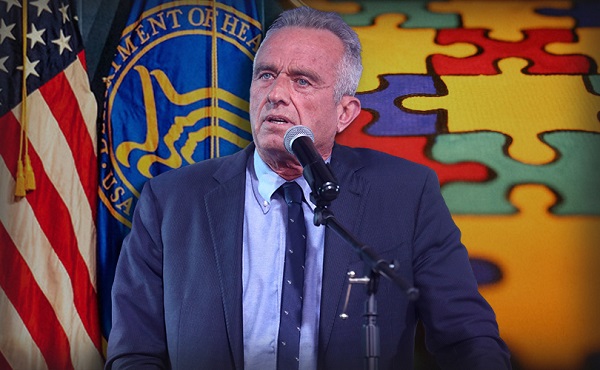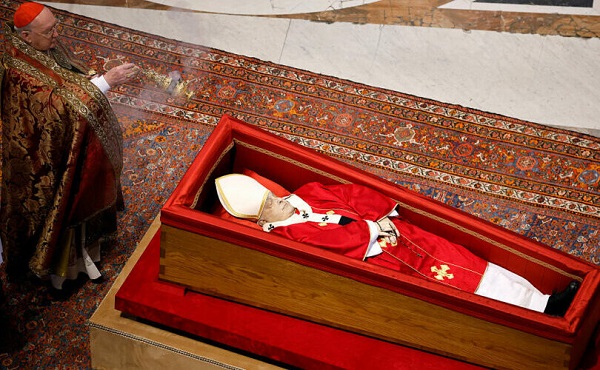Education
Why Don’t Men Go To University Any More?


What will that mean for universities…and for 21st century work?
A while back, I mentioned the strange case of the disappearing university male. In that context I wondered how the educational establishment – in whose eyes a university degree is a primary success metric – are addressing the 58% (female) to 42% (male) disparity blocking male success. But I didn’t get around to asking why it’s happening.
However, here’s a fascinating recent post from American writer Celeste Davis that dives deep, deep down the rabbit hole. The article first references a handful of more mainstream theories seeking to explain the gap, including:
- High tuition costs (which, I guess, just don’t bother women?)
- Boys having weaker academic skills
- Boys being exposed to negative messaging in early grades
- Politically left-friendly campuses that attract more women
- More high-paying career alternatives for men
Davis agrees that those are probably all contributing factors. But she turns her attention to what she feels is the big driver: male flight. Perhaps, goes the argument, young men just don’t see themselves thriving in career fields that appear to be dominated by women. The more women enrolled in last year’s university cohort, the more of this year’s men decide to check out of university altogether.
The Audit is a reader-supported publication. To receive new posts and support my work, consider becoming a free or paid subscriber.
Or, as Davis puts it:
“For every 1% increase in the proportion of women in the student body, 1.7 fewer men applied. One more woman applying was a greater deterrent than $1000 in extra tuition!”
According to Statistics Canada, overall male enrollment as a proportion of total university populations has dropped by 4.4 percent since 1992. Canada might not be experiencing the same painful overall drops in university enrollments they’re seeing south of the border, but we may not be too far behind.
All this seems to be true of universities in general, but the impact might be more visible in specific programs. In fact, the biggest changes have impacted a handful of university program categories:
- Personal, protective and transportation services – which include law enforcement and fire fighting. Male participation dropped from 85 percent of enrollment in 1992 to just 43 percent in 2021.
- Agriculture, natural resources, and conservation, which saw a decline from 55 percent to 38 percent.
- Physical and life sciences and technologies saw male enrollment drop from 49 percent to 24 percent.
- Social and behavioural sciences and law enrollment fell from 38 percent to 29 percent.
Celeste’s theory is that, rather than external forces driving declines in male participation, it’s the entry of more and more women into academic programs that lies behind the changes.
I don’t think anyone’s suggesting that the solution to the problem is to impose enrollment quotas to limit entry for women. Quotas are evil.
In fact, I’m not 100 percent convinced that this is a problem that even needs solving. That’s partly because I don’t buy the line that university is always the most reliable route to social and economic success. It’s also because I don’t see a down side to relaxing and allowing market forces to work things out for us.
One thing that is worth our attention is the damage these trends might cause the higher education industry over the long term. Upwards of three percent of Canada’s GDP can probably be attributed to the higher education sector. And Canadian universities employ more than 343,000 people – around one of every 80 employed Canadians. You and I may or may not have a direct connection to higher education, but its decline would definitely leave a mark.
It’s worth noting that, for all the chaos those trends might spark within the higher education industry, they appear to be having a surprisingly minor impact on the actual workforce. Employment data from Statistics Canada shows us that the proportion of male workers changed by less than three percentage points between 1987 and 2023 in all but a few of the 18 job categories tracked. The exceptions included:
- Public administration, where the percentage of workers who were male fell from 61 percent in 1987 to 48 percent in 2023.
- Educational services, which saw the number of male teachers and administrators fall ten points from a representation of 42 percent to 32 percent.
- Male participation in the finance, insurance, real estate, rental and leasing industries actually rose from 41 percent to 47 percent.
But the exceptions were far less interesting than the fields where there was no significant change. Compare the four percent drop in agricultural employment to the 30 percent by which enrollment in agriculture, natural resources and conservation programs fell.
Similarly, the 25 percent drop in male participation in science and technology programs doesn’t seem to play out in the real world: male employment in professional, scientific and technical services is effectively unchanged since 1987.
Those enrollment vs employment designations aren’t perfectly aligned, of course. And employment data does have a far longer built-in lag than university attendance. But the gaping disparity does suggest there are a lot of women signing up for courses but not following up by getting related jobs.
Subscribe to The Audit.
Autism
Autism Rates Reach Unprecedented Highs: 1 in 12 Boys at Age 4 in California, 1 in 31 Nationally

 Popular Rationalism
Popular Rationalism
 James Lyons-Weiler
James Lyons-Weiler
The U.S. Centers for Disease Control and Prevention (CDC) has released its 2025 report from the Autism and Developmental Disabilities Monitoring (ADDM) Network, and the findings are alarming: autism spectrum disorder (ASD) now affects 1 in 31 American 8-year-olds—the highest rate ever recorded.
For boys, the numbers are even more staggering: 1 in 20 nationwide, and 1 in 12.5 in California. The report, which tracks children born in 2014, reveals a crisis growing in severity and complexity, yet broadly unacknowledged in the national discourse.
Autism has become a public health crisis of urgent concern,” the report states plainly. And yet, government agencies have offered no new national action plan, and media coverage remains anemic.
Rapidly Accelerating Trends
In just two years, autism prevalence among 8-year-olds rose 17%, from 1 in 36 to 1 in 31. This is not an anomaly. Since the CDC began tracking autism in children born in 1992, prevalence has increased nearly fivefold, defying theories that attribute the rise solely to broader diagnostic criteria or increased awareness.
The Impact of SB277 on Autism Prevalence in California
In 2015, California enacted Senate Bill 277 (SB277), which went into effect on July 1, 2016. This legislation eliminated the state’s personal belief exemption (PBE) for childhood vaccinations, making it one of only three U.S. states at the time—alongside Mississippi and West Virginia—to require full compliance with the CDC-recommended vaccine schedule for school entry, except in cases of formally approved medical exemption.
While the primary intent of SB277 was to increase vaccination rates and try to reduce outbreaks of communicable diseases like measles, its implementation has coincided with a continued—and arguably accelerated—rise in autism spectrum disorder (ASD) diagnoses in the state. Data drawn from the California Department of Developmental Services (CDDS) and CDC’s Autism and Developmental Disabilities Monitoring (ADDM) Network offer a timeline of prevalence rates before and after the law’s enactment:
Between 2014 and 2017, ASD prevalence among young children in California increased from 0.86% to 1.18%—a 37.2% increase in just three years. By 2020, according to CDC ADDM surveillance, 4.5% of 8-year-olds in California had an autism diagnosis—the highest prevalence among all U.S. monitoring sites.
Percent Increase Post-SB277 (2016 to 2020):
From 1.08% (2016) to 4.5% (2020) = 316.7% increase
This dramatic rise cannot be definitively attributed to SB277 alone, but its temporal proximity to the policy change—which effectively compelled full vaccine schedule compliance across all demographic groups—raises serious questions. Notably, this increase occurred within California’s already robust autism tracking infrastructure (CDDS), known for conservative case identification that focuses on children with moderate to severe impairment requiring lifelong services.
While correlation does not imply causation, the magnitude and timing of California’s autism surge post-SB277 should compel further independent investigation, particularly given that:
- SB277 removed opt-out options for thousands of previously unvaccinated or selectively vaccinated children;
- The increase is most visible in 4-year-old cohorts tracked soon after the law took effect;
- California’s autism rates now exceed 1 in 12 for boys.
In light of these findings, California may now serve not only as a terrible national model for vaccine compliance—but also as a bellwether for unintended consequences of compulsory public health policy.
Alarming Trends in IQ
Contrary to such assumption of ASD leading to giftedness, the ADDM data also show that the proportion of children with higher IQs is actually decreasing, while the share of children with intellectual disability (IQ ≤ 70) has risen. Nearly 2 out of 3 children (64%) diagnosed with autism in this cohort fall below the IQ 85 threshold, indicating moderate to severe impairment.
These are hard realities that many will find unacceptable. Still, nationally, nearly 40% (39.6%) of 8-year-olds with ASD had IQ ≤ 70. Another 24.2% had borderline IQ (71–85). 36.1% had IQ > 85.
Since autism has a motor neuron impairment, demonstrated IQ may be an inexact measure of actual intelligence, as Spellers The Movie has taught the world.
From a clinical viewpoint, the ADDM report’s data quietly demolish the idea that autism incidence increases are driven by mild or high-functioning cases. Since the early 2000s, the proportion of cases with average or high IQ has dropped, while those with intellectual disability have surged. This trend—now reaching nearly 64%—indicates that autism’s rise is not a matter of greater sensitivity in diagnosis. Rather, it appears we are witnessing a real increase in biologically significant, disabling neurodevelopmental injury.
Reversal of Historic Ethnodemographic Trends
The report presents data on racial disparity that now represents a reversal:
Asian/Pacific Islander (3.75%), Black (3.63%), Hispanic (3.58%), and Multiracial (3.27%) 8-year-olds are now more likely to be identified with autism than White children (2.77%)
This is a complete reversal of pre-2018 trends, where White children had the highest identification rates. Children from low-income neighborhoods had higher prevalence of ASD than those from high-income areas in several states, e.g., Utah and Wisconsin
The California Signal: A Harbinger of What’s to Come?
San Diego, California, stands out as a sentinel site—and a warning. According to Supplementary Table 8 of the report, 8.87% of 4-year-old boys in California are diagnosed with autism. Further breakdown shows even more troubling disparities:
- Black boys: ~12%
- Hispanic boys: ~10.5%
- Asian boys: ~9%
- White boys: ~5.3%
These numbers imply that 1 in 8 to 1 in 10 young boys of color in California may carry an autism diagnosis by the time they reach second grade.
Are Environmental Triggers Driving This?
One overlooked possibility is that cumulative exposures—including the full CDC childhood vaccine schedule, lockdown-era developmental disruption, and coexisting toxicants—may act in concert to dysregulate immune and neurological development. California’s 2016 vaccine mandate removed all non-medical exemptions, making full compliance unavoidable for most working families. This timing intersects directly with birth years showing the steepest autism rises. If these policy changes are contributing, even partly, to this epidemiological shift, they demand urgent investigation—not blind defense.
The demographic disparities further reinforce the environmental hypothesis. Among 4-year-olds, autism rates among children of color now exceed those of White children by 40–90%, depending on the group and region.
Public Health Policies Under Scrutiny
Importantly, California’s strict mandate—which bars children from school or daycare without full vaccination—creates a uniquely high-exposure environment for children whose families cannot afford alternatives. These children are also more likely to be Black or Hispanic, compounding the already sharp disparities now seen in ASD prevalence. In San Diego’s 2018 birth cohort, over 1 in 10 Black and Hispanic boys have an autism diagnosis at age four. The notion that this simply reflects “better identification” strains all credibility.
Additionally, pandemic-era lockdowns, prolonged school closures, and extended masking requirements in California may have played a compounding role in disrupting normal developmental pathways for toddlers and young children during formative years.
The Cost of Inaction
The fiscal and societal burden of autism is already astronomical. A 2020 economic model projected U.S. autism-related costs could exceed $5.5 trillion per year by 2060 if trends continue unmitigated. That estimate did not anticipate the rapid acceleration seen in this latest data.
Your tax dollars have funded years of futile autism genetics research that has not led to any prevention, mitation or treatment, and any given individual genes from genome-wide association studies (GWAS) still explain only a sliver of ASD heritability. Meanwhile, evidence continues to build around plausible environmental and iatrogenic mechanisms—oxidative stress, mitochondrial dysfunction, and aluminum adjuvants, among others—without serious investment in confirming or ruling them out. If the CDC were tracking causation with the same rigor it tracks prevalence, we might already have answers.
A Turning Point?
Public health leadership now faces a choice: double down on statistical obfuscation, or finally confront the rising tide of childhood neurological injury. The tools exist—retrospective cohort comparisons, machine learning to detect risk patterns, causal inference modeling of environmental exposures, and most critically, honest, open-ended research. The CDC and NIH must stop chasing only genetic ghosts and start investigating the real, tangible environmental shifts that mirror this crisis in time.
For decades, the CDC, NIH, and IOM have promoted the idea that the rise in autism is primarily diagnostic, while excluding or downplaying environmental and iatrogenic hypotheses. But the current data—showing accelerating prevalence, worsening severity, and growing racial disparities—make this position untenable. It is now clear that narrative closure, not causal closure, has been guiding public messaging. The refusal to explore vaccine adjuvants, prenatal toxic exposures, chronic immune activation, and regulatory policy failures reflects a broken system more committed to preserving public confidence than discovering the truth.
In a striking statement during an April 2025 Cabinet meeting, Secretary of Health and Human Services Robert F. Kennedy Jr. declared,
“By September, we will know what has caused the autism epidemic and we’ll be able to eliminate those exposures.”
The promise represents a historic shift in federal tone—marking the first time in decades that a sitting health official has committed to openly investigating all plausible causes of autism, including environmental and iatrogenic exposures.
Popular Rationalism is a reader-supported publication.
To receive new posts and support my work, consider becoming a free or paid subscriber.
Education
Schools should focus on falling math and reading skills—not environmental activism

From the Fraser Institute
In 2019 Toronto District School Board (TDSB) trustees passed a “climate emergency” resolution and promised to develop a climate action plan. Not only does the TDSB now have an entire department in their central office focused on this goal, but it also publishes an annual climate action report.
Imagine you were to ask a random group of Canadian parents to describe the primary mission of schools. Most parents would say something along the lines of ensuring that all students learn basic academic skills such as reading, writing and mathematics.
Fewer parents are likely to say that schools should focus on reducing their environmental footprints, push students to engage in environmental activism, or lobby for Canada to meet the 2016 Paris Agreement’s emission-reduction targets.
And yet, plenty of school boards across Canada are doing exactly that. For example, the Seven Oaks School Division in Winnipeg is currently conducting a comprehensive audit of its environmental footprint and intends to develop a climate action plan to reduce its footprint. Not only does Seven Oaks have a senior administrator assigned to this responsibility, but each of its 28 schools has a designated climate action leader.
Other school boards have gone even further. In 2019 Toronto District School Board (TDSB) trustees passed a “climate emergency” resolution and promised to develop a climate action plan. Not only does the TDSB now have an entire department in their central office focused on this goal, but it also publishes an annual climate action report. The most recent report is 58 pages long and covers everything from promoting electric school buses to encouraging schools to gain EcoSchools certification.
Not to be outdone, the Vancouver School District (VSD) recently published its Environmental Sustainability Plan, which highlights the many green initiatives in its schools. This plan states that the VSD should be the “greenest, most sustainable school district in North America.”
Some trustees want to go even further. Earlier this year, the British Columbia School Trustees Association released its Climate Action Working Group report that calls on all B.C. school districts to “prioritize climate change mitigation and adopt sustainable, impactful strategies.” It also says that taking climate action must be a “core part” of school board governance in every one of these districts.
Apparently, many trustees and school board administrators think that engaging in climate action is more important than providing students with a solid academic education. This is an unfortunate example of misplaced priorities.
There’s an old saying that when everything is a priority, nothing is a priority. Organizations have finite resources and can only do a limited number of things. When schools focus on carbon footprint audits, climate action plans and EcoSchools certification, they invariably spend less time on the nuts and bolts of academic instruction.
This might be less of a concern if the academic basics were already understood by students. But they aren’t. According to the most recent data from the Programme for International Student Assessment (PISA), the math skills of Ontario students declined by the equivalent of nearly two grade levels over the last 20 years while reading skills went down by about half a grade level. The downward trajectory was even sharper in B.C., with a more than two grade level decline in math skills and a full grade level decline in reading skills.
If any school board wants to declare an emergency, it should declare an academic emergency and then take concrete steps to rectify it. The core mandate of school boards must be the education of their students.
For starters, school boards should promote instructional methods that improve student academic achievement. This includes using phonics to teach reading, requiring all students to memorize basic math facts such as the times table, and encouraging teachers to immerse students in a knowledge-rich learning environment.
School boards should also crack down on student violence and enforce strict behaviour codes. Instead of kicking police officers out of schools for ideological reasons, school boards should establish productive partnerships with the police. No significant learning will take place in a school where students and teachers are unsafe.
Obviously, there’s nothing wrong with school boards ensuring that their buildings are energy efficient or teachers encouraging students to take care of the environment. The problem arises when trustees, administrators and teachers lose sight of their primary mission. In the end, schools should focus on academics, not environmental activism.
-

 2025 Federal Election1 day ago
2025 Federal Election1 day agoBREAKING: THE FEDERAL BRIEF THAT SHOULD SINK CARNEY
-

 2025 Federal Election2 days ago
2025 Federal Election2 days agoCHINESE ELECTION THREAT WARNING: Conservative Candidate Joe Tay Paused Public Campaign
-

 2025 Federal Election2 days ago
2025 Federal Election2 days agoOttawa Confirms China interfering with 2025 federal election: Beijing Seeks to Block Joe Tay’s Election
-

 2025 Federal Election2 days ago
2025 Federal Election2 days agoReal Homes vs. Modular Shoeboxes: The Housing Battle Between Poilievre and Carney
-

 2025 Federal Election22 hours ago
2025 Federal Election22 hours agoMark Carney Wants You to Forget He Clearly Opposes the Development and Export of Canada’s Natural Resources
-

 International15 hours ago
International15 hours agoPope Francis’ body on display at the Vatican until Friday
-

 Business1 day ago
Business1 day agoHudson’s Bay Bid Raises Red Flags Over Foreign Influence
-

 2025 Federal Election22 hours ago
2025 Federal Election22 hours agoCanada’s pipeline builders ready to get to work









